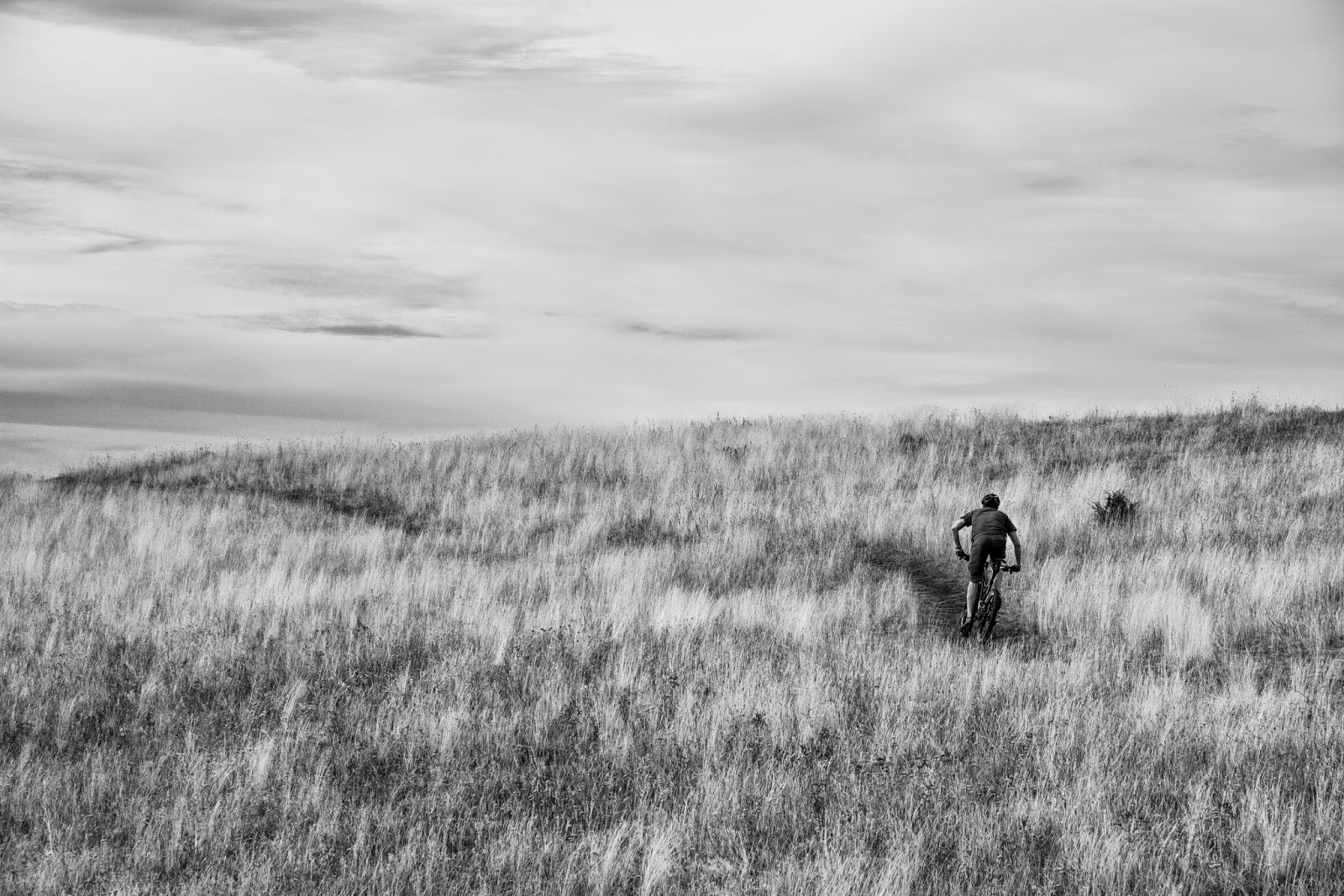Tonight I decided I was going to go out and take some awesome night photos of the Bridgers. So I got in my car, all gear packed and ready, and set off down the road. And then, about 2 minutes later, was back at home rushing to get my bike and gear. I realized that just doing some land scape photos wouldn't be all that fun, but riding down a super sketching trail at night by myself would be oh so entertaining.
The steep trail on the M is, well, steep. Not unridable by any means, but when it's dark and your head lamp is barely working...it's rather interesting. But oh, is it fun. I'm going to have to do a night ride again soon....
Basically, I walked up the trail to a spot where there's nice curves so the light trail goes across the frame a couple times, and when the sky line is good. The spot I picked was just perfect. The trail does a zig zag in the frame, with a nice little rock garden in the lower right corner for me to ride through. And even better, the hills in the background point right toward where I'm going to be riding! So perfect.
Now...how
Well, the answer is quite simple, just a long exposure! I have to anyway to get the stars in the shot, and to get the light trail I want, and to get light on the ground. I did a first test shot at 30s, ISO800, and f3.5. It was about perfect! The ground was a little under exposed, but since I'd be adding light with my head lamp, I thought that would probably be good enough. The stars were there just like they should, so I was happy.
I put my intervelometer on, and set it to a delay of 1 minute. This gave me some time to hike up the trail a bit. I also set the camera to bulb, and set my exposure time to be 1 minute at ISO400. This would give me the same exposure as 30s at ISO800, only I would have more time to ride and there would also be less noise. Good trade off.
It worked perfectly on the first try. Which left me with two options. 1) Leave, never to return again. 2) Try to do a freeze frame with strobes to composite in.
Naturally, I chose door 2.
Figuring cross lighting would probably work out the best, I set up two strobes. Here's a picture of what that looked like. The top left is set to 1/4 power and has a grid on it to constrict the light a bit to just where I'm riding. The bottom is at 1/16 and zoomed to 105mm, also to contract the light. I didn't want to light anything other than myself, which would go along with the lighting that already was happening with the head lamp.
To sync, I used my old trigger and good old fashion optical slaves. My theory was that I could hit the trigger my biting it, which would set off the lower flash, which would then trigger the top flash to go off. And you know what, it worked
For editing, I literally didn't do a thing to the image. Except b/w. but that's it.
In Ps, I just painted a little mask over me for the riding shot, then put it on top of the light trail shot. Easy as cake, and even the light trails from my head lamp matched up! Here's a little picture of the mask I made, just so you can see what's going on.
Happy Halloween! See you tomorrow!












































